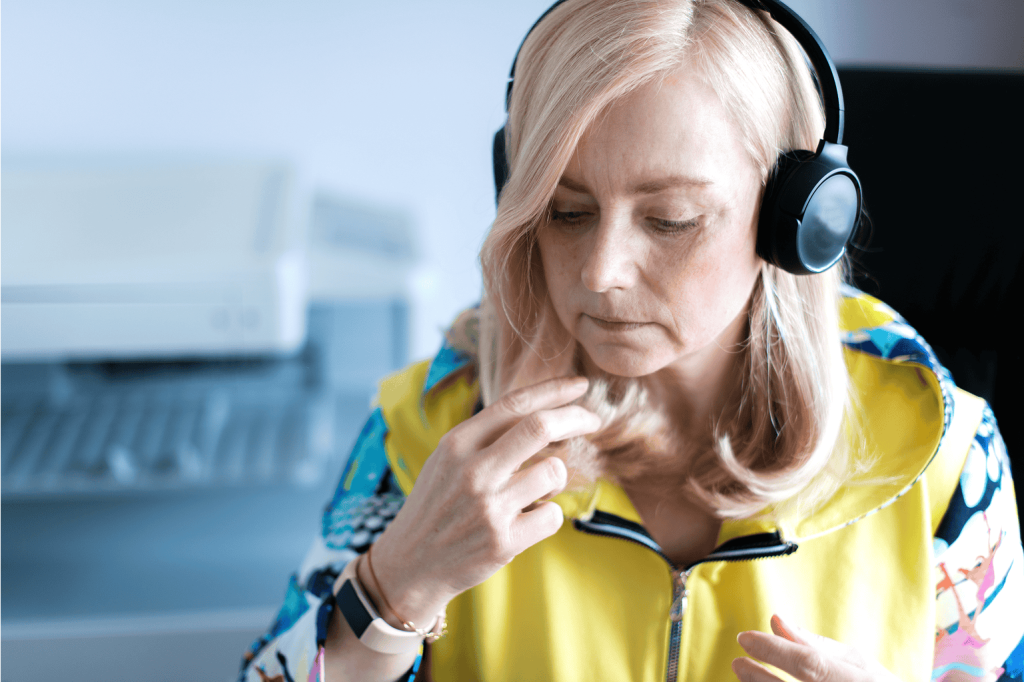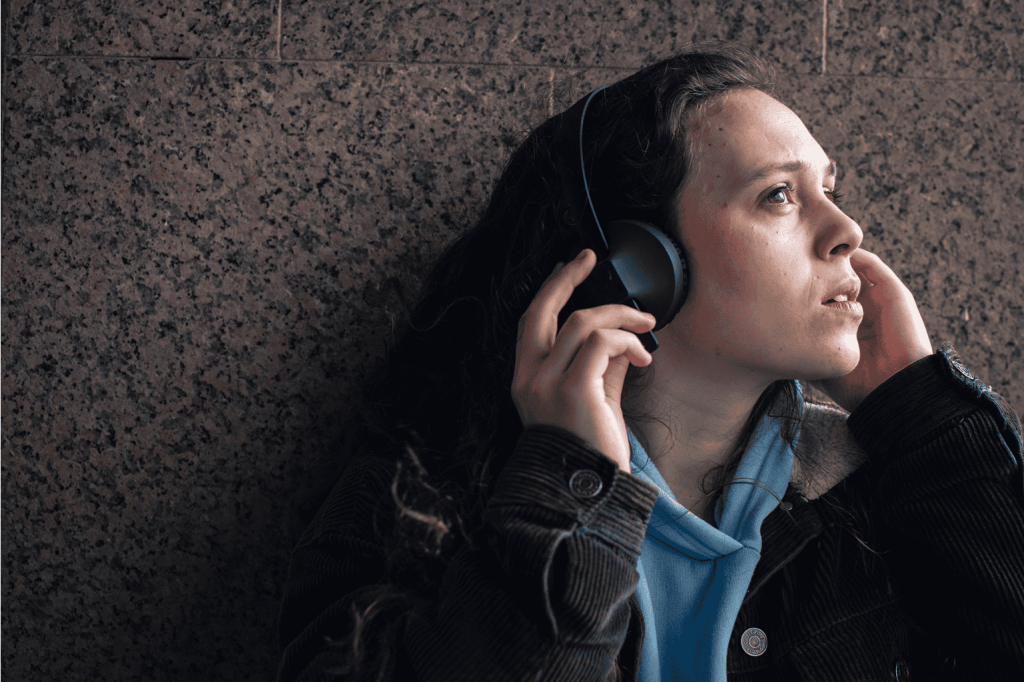Sound Therapy For Tinnitus: 5 Evidence Base Methods for Home Treatment

Table of Contents
Introduction
Living with tinnitus can feel like a relentless, invisible battle, one where traditional medical advice often falls short and standard solutions rarely offer real relief. If you’re reading this, you’re likely looking for something beyond vague reassurance or another list of “coping tips.” You want practical, actionable solutions that can genuinely change your day-to-day experience with tinnitus.
The aim of this article is to do exactly that: to put real tools in your hands, whether you’re seeking relief for yourself or helping someone else. We focus on approaches that restore a sense of agency and hope, giving you a path forward even when tinnitus feels overwhelming or isolating. Here, you’ll find methods you can try, adapt, and refine, all rooted in current science and the evolving field of sound therapy.
Sound Therapy as the Central, Non-Invasive Approach
Most of the non-invasive solutions with genuine promise for tinnitus relief are rooted in sound therapy. But “sound therapy” is far more than simply playing background noise. It’s a dynamic therapeutic field that ranges from personalized music and precisely engineered soundscapes to subtle vibrations that you can hear or feel.
What truly sets sound therapy apart is its flexibility and accessibility. Unlike medications or surgical procedures, which rarely offer lasting help, sound therapy empowers you to take charge of your environment and tailor interventions to your unique experience. You choose the sounds, the timing, and the methods, making the process both personal and adaptable.
At its best, sound therapy isn’t just a treatment, it’s a toolkit for self-guided transformation, offering practical ways to experiment, discover what brings relief, and actively participate in your own healing journey.
What Is Tinnitus? (Brief, Human-Centric Explanation)
Tinnitus is the perception of sound in the absence of an external source. For some, it’s a faint background hum or an occasional high-pitched tone. For others, it’s a persistent ringing, buzzing, hissing, or even musical notes that can disrupt sleep, focus, and peace of mind. Tinnitus isn’t a disease itself, but a symptom, one with many possible causes and mechanisms.
Most commonly, tinnitus is “subjective,” meaning only the affected person can hear it. This form is believed to result from changes or disruptions anywhere along the auditory pathway, from the tiny hair cells in the inner ear to the complex processing centers in the brain. Far more rarely, tinnitus is “objective”, a physical sound, often from a vascular or muscular source, that may be audible to a clinician during examination.
While tinnitus is often linked to hearing loss or exposure to loud sounds, it can also follow ear infections, head injuries, jaw disorders (TMJ), certain medications, or sometimes emerge with no clear trigger at all. The wide range of causes makes tinnitus a deeply individual experience, one that often defies one-size-fits-all solutions and demands an adaptable, holistic approach.
The wide range of causes makes tinnitus a deeply individual experience, one that often defies one-size-fits-all solutions and demands an adaptable, holistic approach.
To understand where sound therapy fits, it helps to look at the most common root causes of tinnitus, how reversible they are, and what treatment options are available. The following table summarizes the landscape:
Table: From Root Cause to Relief—Where Sound Therapy Fits Among Tinnitus Treatments
| Root Cause / Trigger | Reversible? | Medical Treatments | Role for Sound Therapy |
| Earwax blockage | Yes | Ear cleaning/removal | Usually unnecessary after removal |
| Middle ear infection/fluid | Yes | Antibiotics, drainage | Usually unnecessary after treatment |
| Ototoxic medications | Sometimes | Stop/change medication | Can help manage persistent symptom |
| TMJ disorder (jaw) | Sometimes | Dental, physical therapy | Often helpful adjunct |
| Vascular/structural issue | Rarely | Surgery, treat underlying | Sometimes adjunct |
| Sudden hearing loss/trauma | Rarely | Hearing aids, steroids | Often primary tool for relief |
| Chronic noise-induced loss | No | Hearing aids | Often primary tool for relief |
| Age-related hearing loss | No | Hearing aids | Often primary tool for relief |
| Meniere’s disease | No | Diet, meds, sometimes surgery | Often primary tool for relief |
| Idiopathic/unknown | No | No direct medical treatment | Sound therapy is primary approach |
| Stress/anxiety | Partially | Counseling, stress reduction | Can be combined for best outcome |
Why Does Tinnitus Persist?
As you can see, many of the root causes of tinnitus are not reversible, or persist even after medical treatment. In these situations, sound therapy becomes the cornerstone for managing, and sometimes even reducing, the ongoing symptom. But why does tinnitus remain even when the original trigger is gone? The answer lies in the way the brain adapts, learns, and sometimes gets stuck.
What makes tinnitus so persistent, and so challenging to treat, is that it often outlasts the original trigger. Even after the ear injury, infection, or noise exposure is gone, the phantom sound remains. This happens because tinnitus is rarely just an “ear problem.” Instead, it reflects a change in the way the brain processes sound.
When the brain is deprived of normal auditory input, due to hearing loss or damage to the ear, it sometimes compensates by “filling in” the silence with internally generated sound. Neurons that once responded to real sounds can become hyperactive or misfire, creating the perception of noise where none exists. Over time, the brain’s networks adapt to this new, abnormal input, reinforcing the cycle and making tinnitus feel like an inescapable part of daily life.
Neuroplasticity: The Bridge Between Symptom and Solution
Here’s where both the problem and the solution converge: neuroplasticity, the brain’s ability to change, rewire, and adapt. Neuroplasticity is what allows tinnitus to become deeply embedded, the brain literally learns to perceive, notice, and focus on these phantom sounds.
But neuroplasticity is also our greatest ally. Just as the brain can learn to “lock in” tinnitus, it can also learn to tune it out, reduce its prominence, or associate it with calm instead of distress. The most promising sound therapy techniques work by harnessing neuroplasticity: providing new, carefully designed sensory input that guides the brain away from old, maladaptive patterns. Through active listening, tailored soundscapes, and other approaches, sound therapy doesn’t just mask tinnitus, it helps retrain the brain, offering the potential for real, lasting relief.
Understanding neuroplasticity changes the way we approach tinnitus. Instead of passively enduring the noise or settling for generic advice, we can now use targeted sound interventions to actively reshape the brain’s response. In this next section, we’ll move beyond the basics and explore some of the most effective, innovative, and even experimental sound therapy methods available today.
Some of these techniques are well-established, others are new or still emerging from research labs and patient communities, but all are grounded in the principle that your brain is capable of meaningful change. Whether you’re seeking immediate relief or long-term improvement, these interventions offer practical ways to reclaim comfort, clarity, and a greater sense of control over tinnitus.
1. Personalized Masking for Real Relief

Masking is often where most people start with sound therapy for tinnitus. At its simplest, masking uses gentle background sounds, like white noise, rain, fans, or music, to make tinnitus less noticeable. But generic masking has limits: it can be intrusive, tiring, or even block out the world around you.
A modern approach to masking is all about personalization. Instead of settling for one-size-fits-all noise, you can experiment with different sounds and strategies to find what actually blends best with your tinnitus, and your life.
How to try Personalized Masking at Home
Step 1: Target Your Tinnitus
- Use an app or online sound generator to create tones or narrowband noise that closely matches the pitch, volume, or quality of your tinnitus.
- Adjust the sound until it blends with (but doesn’t overpower) your tinnitus.
- Many people find that tinnitus-matched sounds are less irritating and more effective than generic masking.
Step 2: Explore Field Recordings for Open-Ear Masking
- Download or stream high-fidelity recordings of real-world environments you enjoy (forests, parks, cafés, waves).
- Play these softly on open-back headphones or good speakers, letting them blend into your environment naturally.
Step 3: Adjust the Volume for Gentle Blending
- Set the volume just below or at the level of your tinnitus.
- The goal is to blend tinnitus into your sound environment, not drown it out or block all outside sounds.
Step 4: Use During Key Activities
- Play masking sounds during times when tinnitus is most intrusive (work, study, relaxation, bedtime).
- Try pairing masking with gentle movement or relaxation, like walking, stretching, or yoga, for multisensory habituation.
Step 5: Refine and Rotate Your Approach
- Regularly experiment with different sounds and settings to find what’s most comfortable and effective for you.
- Switch to a new sound if your current masking becomes less helpful or starts to irritate you.
Tips and Caveats
- Avoid masking all the time: Give your brain some “quiet time” daily to avoid over-reliance on external sounds.
- Stay mindful of volume: Too much volume can cause hearing fatigue or even worsen tinnitus for some.
- Personalization matters: What soothes one person may irritate another, keep experimenting.
- Use high-quality audio: Good headphones or speakers make a noticeable difference in comfort and sound quality.
- Combine with other strategies: Combine these approaches with movement or relaxation, like walking, stretching, or yoga, to help habituation become part of your daily rhythm.
2. Notched Music Therapy

Notched music therapy is a cutting-edge, neuroplasticity-based approach that goes far beyond masking. Instead of simply covering up your tinnitus, notched music therapy aims to retrain your brain and weaken the neural pathways responsible for the phantom sound.
Music you enjoy is digitally processed to “notch out” (remove) the specific frequency band that matches your tinnitus tone. By consistently listening to this customized music, you give your brain hours of auditory stimulation that avoids reinforcing the tinnitus frequency, encouraging the auditory system to “unlearn” or de-emphasize the tinnitus signal.
Notched music therapy has shown promising results in early research, especially for tonal tinnitus. It is non-invasive, safe, and easy to try at home. Results vary. Some experience significant relief, others more subtle shifts, but for many, it’s a hopeful step beyond basic masking.
How to Try Notched Music Therapy at Home
Step 1: Find Your Tinnitus Frequency
- Use an online tone generator or a tinnitus matching app (e.g., Online Tone Generator or myNoise).
- Adjust the frequency slider until the pitch matches your tinnitus as closely as possible.
- Write down your frequency in hertz (Hz).
Step 2: Process Your Music
- Choose your favorite songs or relaxing tracks.
- Upload your tracks to a notched music service or app (such as Tinnitracks or Audionotch).
- Enter your tinnitus frequency so the service can filter out (“notch”) that specific frequency band from your music.
- Download your custom notched tracks.
Step 3: Listen Consistently
- Play your notched music for at least 1–2 hours per day, ideally while relaxed or during daily activities.
- Use good-quality headphones or speakers for the best experience.
- Keep the volume at a comfortable, non-intrusive level.
Step 4: Track Your Progress
- Use a journal or an app to note changes in your tinnitus intensity, quality, or emotional response over time.
- Look for gradual trends across weeks or months, improvement may be subtle and slow.
Tips and Caveats
- Frequency accuracy matters: Double-check your tinnitus pitch every few weeks, as it can shift.
- Use music you enjoy: This increases your likelihood of sticking with the therapy.
- Best for tonal tinnitus: Works most effectively for single-pitch tinnitus.
- Take breaks as needed: If you experience fatigue or annoyance, pause and resume later.
- Be patient: Notched music therapy typically brings gradual change rather than instant results.
3. Acoustic Coordinated Reset (CR) Neuromodulation

Most sound therapy either blends with or distracts from tinnitus, but Acoustic Coordinated Reset (CR) Neuromodulation is an advanced approach that aims to actively “reset” the brain’s abnormal sound-processing patterns. While the official CR protocols are used in clinics, you can experiment with a simplified, DIY version at home, no prescription required.
CR neuromodulation involves playing short, precisely timed tones, customized to your tinnitus frequency, in a patterned sequence. The goal: to break up the synchronized neural firing that causes the persistent phantom sound, and encourage your brain to reorganize its response to silence.
How to Try CR Neuromodulation at Home
Step 1: Find Your Tinnitus Frequency:
- Use an online tone generator or a tinnitus matching app (e.g., Online Tone Generator or myNoise).
- Adjust the frequency slider until the pitch matches your tinnitus as closely as possible.
- Write down your frequency in hertz (Hz).
Step 2: Generate Your Tone Sequence
- You’ll need to create 3–4 brief tones, all centered on your tinnitus frequency. For example, if your tinnitus is at 7,000 Hz, create tones at:
- Your exact frequency (e.g., 7,000 Hz)
- Slightly above (e.g., 7,100 Hz)
- Slightly below (e.g., 6,900 Hz)
- Optionally, add another (e.g., 7,200 Hz)
- Set each tone to play for 50–100 milliseconds, with brief gaps of silence between them (100–200 ms).
Step 3: Play the Patterned Sequence:
- Use a free or paid audio editor (like Audacity, AudioMass, or a phone app) to arrange your tones into a repeated pattern (e.g., A–B–C–A, with silence between).
- Loop the pattern so that it repeats steadily for a set duration, typically 30–60 minutes per session.
- Listen through good-quality headphones at a comfortable, non-intrusive volume. The sound should be audible but not loud or irritating.
Step 4: Repeat Consistently:
- Aim for daily sessions (e.g., once per day, or twice daily if well-tolerated) over several weeks.
- The original research used sessions lasting from 30 minutes to several hours per day, but you can start with shorter durations and adjust based on comfort.
Step 5: Track Your Progress:
- Use a journal or a simple app to note tinnitus intensity and quality before and after each session.
- Look for trends over several weeks, not necessarily instant results.
Tips and Caveats
- Experimentation is key: You may need to adjust the number of tones, their spacing, or session length for your unique tinnitus.
- If your tinnitus has multiple tones: Try repeating this process for each dominant pitch, or use broader frequency steps.
- Don’t use loud volumes: The stimulation should never be painful or cause hearing fatigue.
- Expect gradual change: Some people notice improvement in a few weeks; others may not. This is still experimental outside of clinical settings.
- If your tinnitus worsens: Pause the intervention and consult an audiologist.
4. Bimodal Neuromodulation: Pairing Sound with Sensation

While most sound therapies focus only on what you hear, bimodal neuromodulation taps into the power of the brain to integrate multiple senses at once. Recent research (and devices like Lenire) show that pairing auditory stimulation with gentle touch or vibration can more powerfully “retrain” the brain’s response to tinnitus.
Bimodal neuromodulation uses two forms of stimulation, usually sound plus a mild electrical or tactile input (like vibration or tapping). The idea is that synchronized sensory signals help the brain form new, healthier neural pathways, reducing the prominence of tinnitus through neuroplasticity.
Bimodal neuromodulation is one of the most exciting frontiers in tinnitus care. While commercial devices are expensive and regulated, at-home versions offer a way to experiment with the same principles, potentially amplifying the benefits of standard sound therapy.
For more on the science, see Conlon et al., 2020, Science Translational Medicine.
How to Try Bimodal Neuromodulation at Home
Step 1: Choose Your Sound
- Use a masking tone, tinnitus-matched frequency, or calming nature sound, whatever blends best with your tinnitus.
- Play this sound at a comfortable, non-intrusive volume using headphones or speakers.
Step 2: Add a Tactile Stimulus
- As you listen, gently tap your tongue on the roof of your mouth, tap your fingers on your jaw, or use a small vibration device (like an electric toothbrush held gently to your cheek or jaw).
- The tactile stimulus should be soft and rhythmic, not irritating.
Step 3: Synchronize Stimulation
- Try syncing the taps or vibrations with beats or pulses in the sound (for example, every 1–2 seconds).
- Alternatively, pair tapping/vibration with the onset of each new sound in a sequence.
Step 4: Repeat Regularly
- Practice this pairing for 10–30 minutes per day, aiming for consistency over several weeks.
- You can experiment with different pairings (different types of sounds and tactile inputs) to see what feels most soothing or effective.
Step 5: Track Changes
- Log your tinnitus intensity, quality, and emotional response before and after each session.
- Notice trends over weeks rather than expecting immediate shifts.
Tips and Caveats
- Start gently: The tactile input should never hurt or cause discomfort.
- Mix and match: Experiment with different pairings of sound and touch; personalization is key.
- If you have dental work or jaw issues: Choose a different tactile location (such as the cheek or collarbone).
- Be patient: Bimodal neuromodulation works through slow neuroplastic change; persistence matters.
5. Active Listening Games: Training Your Brain to Tune Out Tinnitus

Sound therapy doesn’t have to be a passive experience. In fact, the latest research in brain plasticity shows that how you listen may be just as important as what you listen to. Active listening games transform your sound therapy sessions into focused, interactive exercises, helping your brain learn to shift attention away from tinnitus and back toward the sounds of life.
Active listening builds “attention muscles.” By intentionally searching for specific details in a soundscape, music, or ambient environment, you train your brain to disengage from the internal noise of tinnitus and anchor your awareness to the external world. Over time, this process can help tinnitus fade into the background, reducing its emotional grip and promoting greater mental flexibility.
Active listening games are more than a distraction, they’re a form of brain training that leverages neuroplasticity. By making sound therapy interactive and enjoyable, you help your brain learn to prioritize external sound over internal noise. Over time, this can reduce the “spotlight” on tinnitus and improve your sense of control.
How to Try Active Listening Games at Home
Step 1: Set Up Your Soundscape
- Choose a layered sound environment, such as instrumental music, a complex nature recording (forest, city, ocean), or even a busy café background.
- Play the sound through speakers or headphones at a comfortable volume, so it mixes gently with your tinnitus.
Step 2: Pick a “Listening Target”
- Focus on a single instrument in a song (e.g., the bass line, a piano melody, or the percussion).
- In nature sounds, try to count how many unique birds you hear, or follow the flow of water versus the sound of wind.
- In ambient recordings, pick out distant voices, footsteps, or other subtle details.
Step 3: Switch Focus Consciously
- Every minute or so, choose a new element to spotlight. Deliberately shift your attention between different sounds.
- Practice “zooming in” and “zooming out”, moving from a detailed focus on one sound to a broader awareness of the whole soundscape.
Step 4: Compare to Tinnitus
- Briefly notice your tinnitus, then redirect your focus back to the external sounds.
- If your mind wanders back to tinnitus, simply acknowledge it and gently return attention to your chosen sound target, like mindfulness meditation with a twist.
Step 5: Make It a Game
- Set small goals (e.g., “I’ll pick out five unique sounds in this song” or “I’ll follow this melody for one full minute”).
- Reward yourself for staying engaged; treat the exercise as skill-building, not as a test.
Tips and Caveats
- Start small: If you find it hard to focus or your tinnitus feels overwhelming, begin with just a few minutes at a time and gradually build up.
- Avoid frustration: If a particular soundscape makes your tinnitus worse or is too distracting, switch to a simpler or more soothing recording.
- Stay playful: Treat this as a creative exploration, not a chore. If you miss a detail or lose focus, just gently bring your attention back.
- Mix it up: Regularly change your listening targets or sound environments to keep your brain engaged and prevent boredom.
- Pair with relaxation: For best results, combine active listening with deep breathing, stretching, or a calming routine.
Sound Therapy: Beyond Tinnitus, Toward Total Wellbeing
While this article has focused on tinnitus, it’s important to understand that sound therapy’s impact reaches far beyond the world of ear ringing or persistent noise. In fact, sound is one of the most universal, adaptable, and scientifically validated tools for shifting our physiology, regulating our emotions, and unlocking our brain’s innate power to heal and grow.
Why limit sound therapy to tinnitus?
The same principles that help the brain unlearn intrusive sounds can be used to:
- Reduce anxiety and stress
- Improve sleep quality and relaxation
- Support emotional balance and resilience
- Boost focus, memory, and learning
- Enhance creativity, meditation, and mindfulness practices
- Amplify the benefits of talk therapy, physical therapy, holistic healing, and more
In other words, sound therapy doesn’t just “mask” what’s unwanted, it amplifies what’s possible.
Unlock the Full Power of Sound: Next Steps
If you’re ready to dive deeper, whether for your own journey or to help others, consider exploring our Sound Therapy Practitioner Training Course.
- Learn the science, art, and practical application of sound for healing and transformation
- Get certified to use these tools with confidence in your own practice
- Discover how to integrate sound therapy to enhance other modalities you already use, from coaching to bodywork to creative arts
Curious, but want to experience the basics first?
Download our Introduction to Sound Therapy Guide, your hands-on entry point to the core techniques that change lives, starting with your own.
You have more power than you think.
With sound, you’re not just managing symptoms, you’re tuning your nervous system, changing your brain, and expanding what’s possible for health, creativity, and wellbeing.








Responses